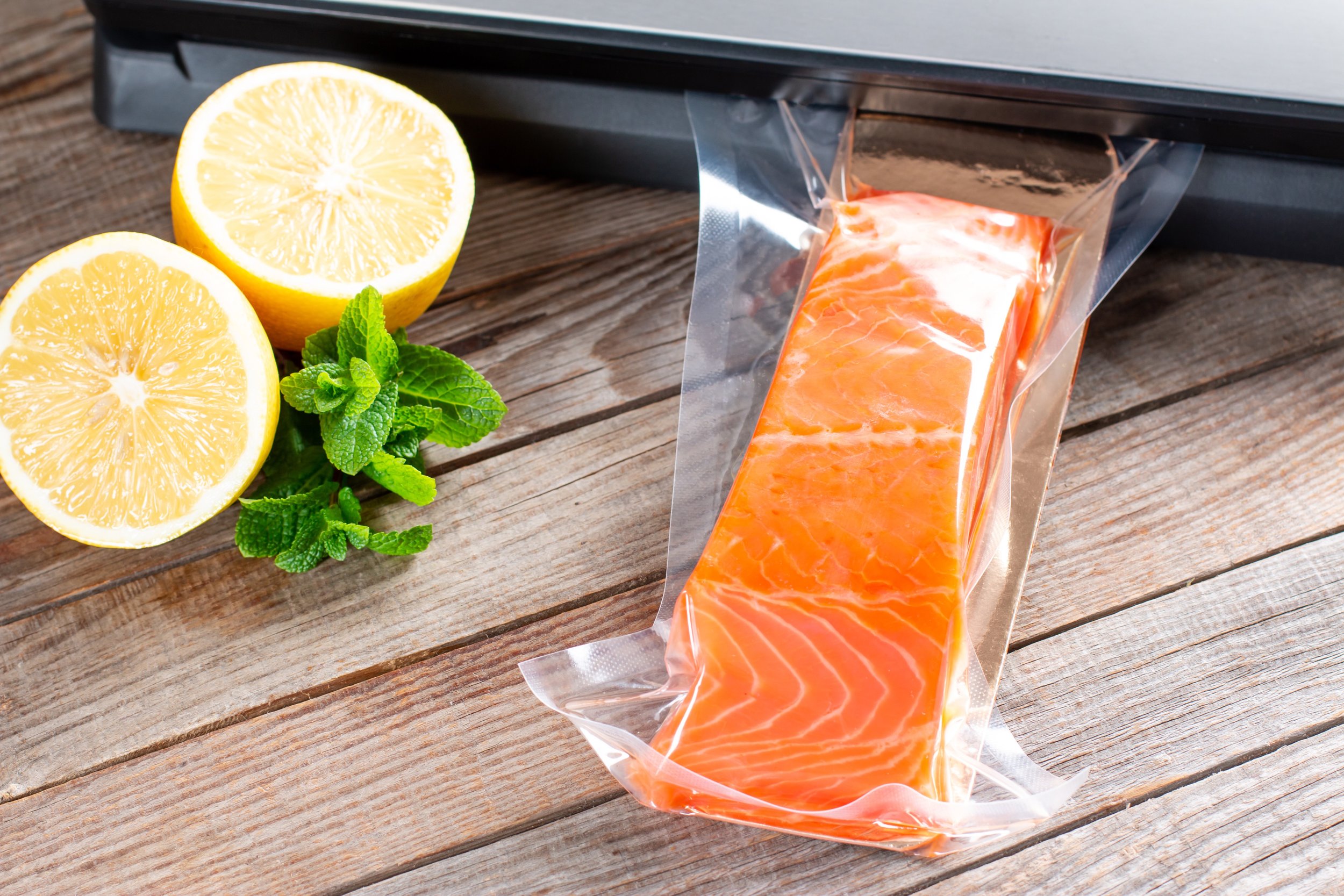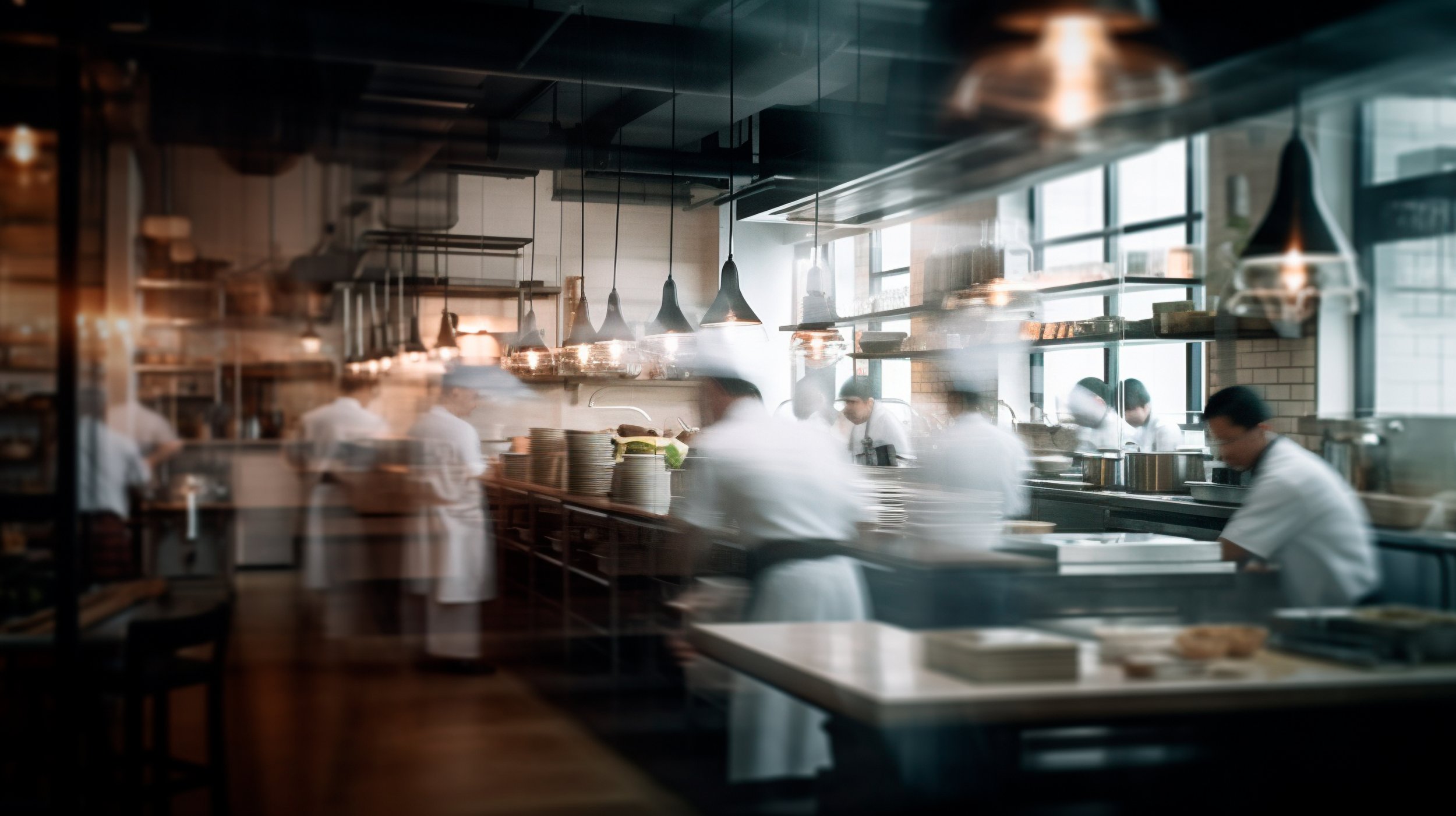How to vacuum pack food safely?
When did vacuum packing food first start?
“Dr Karl Busch developed the first vacuum pump to be used for vacuum packaging of foodstuffs.”
Busch still make vacuum pack machines today but originally they were used to preserve the food for German soldiers and their families during World War II. Vacuum packing was then used on a more commercial scale to increase the shelf life of food.
Many food businesses use vacuum packing commercially today to extend the shelf life of raw, prepared and ready to eat products including cooked and fresh meat, poultry and fish, fresh vegetables, hard cheeses, spices, baking products, coffee, cooked food etc .
However it is very important that food safety and cross contamination controls are followed when vacuum packing food to ensure that it is safe to eat.
What is vacuum packing food?
Vacuum packing involves removing air from the packaging that surrounds food and preventing its return by an airtight seal to stop bacteria from growing. In a typical vacuum pack, the packaging material is molded closely around the food.
Vacuum packing food can preserve food by helping to maintain freshness, flavour, appearance, and texture.
Vacuum packing chilled food
Vacuum sealing raw and ready to eat food can also extend shelflife and will last for 10 days [except for beef and lamb to 13 days] in the fridge if vacuum sealed (and for 1-3 months if frozen). It can also help to reduce wastage and manage food production.
It is important that if the shelf life of chilled food is extended to more than 10 days that an additional preservation method to chilling is applied to the food e.g., pH, reduced water content, brining etc. Refer to the FSA guidelines for more information.
raw meat in vacuum sealed bags
What bacteria can grow in vacuum sealed chilled food?
Clostridium Botulinum bacteria is widely available in the environment and in food. It can grow at chilled temperatures of +3°C which is below the legal temperature of 8°C for chilled food. Some clostridium botulinum bacteria can produce toxins at these low temperatures before the food is perceived to be unfit to eat due to spoilage bacteria.
Listeria Monocytogenes bacteria is an environmental contaminant and found in many foods. It can grow at low temperatures, a wide range of pH values [acid/alkali] and low water availability [dehydrated foods]. Listeria monocytogenes is of particular concern in ready to eat foods and requires controls, such as chilling and limiting shelf life, to be in place to prevent it growing in most foods including vacuum packed foods.
Yersinia enterocolitica is commonly found in contaminated water and food and has been linked to insufficiently cooked pork, milk and ready to eat vegetables. It can grow in vacuum packed food at temperatures as low as -1°C.
Bacillus Cereus is commonly associated with rice but also dairy products and vegetables. It can produce toxins at low temperatures of +4°C in vacuum packed and other foods.
Cross contamination from people, premises and packaging must also be considered including keeping vacuum pack machines for raw and cooked/ready to eat food separate. Don't forget about other risks including physical, chemical and allergen contamination when vacuum packing.
Do you know how to document the food safety risks in vacuum packing chilled food?
Don’t worry if you don’t know where to start, our EHOs have done the hard work for you by designing standalone risk assessments. If you need advice about either vacuum packing or sous vide book in for a chat with one of our expert food safety consultants.
Your HACCP risk assessment for vacuum packing should be part of your food safety management system or HACCP plan and is a legal requirement in food safety law, forming part of your due diligence records.
The risk assessments must be based on HACCP food safety principles, see our article Helping you to cut through the jargon of food safety terms and How to get your head around Food Safety Management Systems for more guidance.
Our food safety experts have designed a HACCP template for ‘Vacuum Packing Chilled Food’ which you can download and complete now, it is compatible with Safer Foods Better Business (SFBB) and includes the controls you should have in place and what you need to do if something goes wrong. All you need to do is complete the safe method with what you do.
We recommend to use the Food Standards Agency FSA vacuum packing guidance for reference.
Sous vide cooking
If you are doing sous vide cooking you will need an additional risk assessment. Head over to our store to download and complete our HACCP template for sous vide cooking which is also SFBB compatible.
Useful resources
Need more help or have a question
If you need further support with vacuum packing or food safety in your business give us a call to have a chat.





